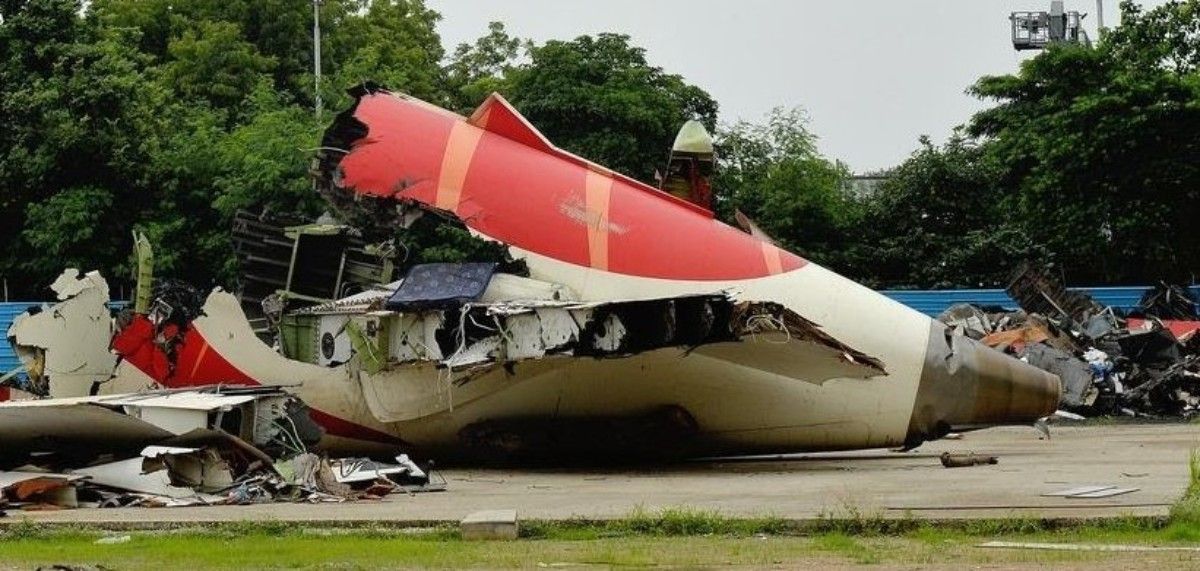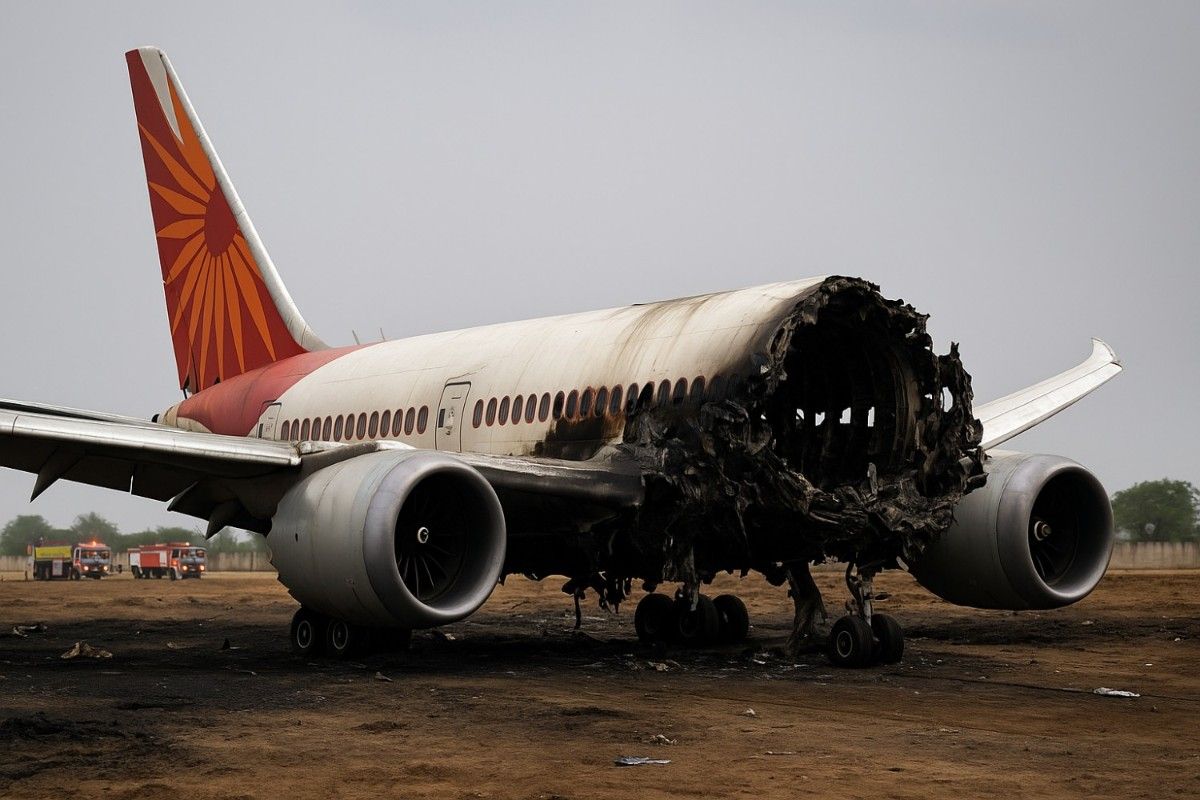The tragic crash of AirIndia flight AI171 on June 12, 2025, in Ahmedabad has sparked global debate and countless theories. While speculation swirled, India’s Aircraft Accident Investigation Bureau (AAIB) has now released its initial findings. This official account reveals a sequence of technical issues, miscommunication, and unexpected events leading to the fatal crash.
International media outlets have been pushing alternate stories. Some suggested human error. Others claimed mechanical failure or bird strike. The AAIB, however, has systematically debunked these claims. Their detailed minute-by-minute reconstruction highlights what actually happened on board the ill-fated AirIndia aircraft.
According to the report, the AirIndia Boeing 787 with registration number VT-ANB had earlier operated as flight AI423 from Delhi to Ahmedabad. It landed safely at 11:17 AM and was directed to Bay 34. However, the incoming crew reported a technical issue in the logbook — a status message reading “STAB POS XDCR.”

The AirIndia ground engineering team immediately got involved. Following the Fault Isolation Manual (FIM), an Aircraft Maintenance Engineer (AME) conducted a thorough check. By 12:10 PM, the plane was cleared for flight and scheduled to depart as AirIndia flight AI171 to Gatwick.
The plane was fueled with 54,200 kilograms of aviation fuel and carried 230 passengers, including two infants. There were 15 in business class and 215 in economy. The aircraft’s takeoff weight was 213,401 kilograms, well below the allowed maximum of 218,183 kilograms. No dangerous cargo was onboard, the AAIB confirmed.
The crew included two pilots and ten cabin members. The captain held an Airline Transport Pilot License (ATPL), while the first officer had a Commercial Pilot License (CPL). Both had arrived in Ahmedabad a day earlier and had rested. On June 12, they passed the pre-flight breath analyzer test at 11:55 AM. At 12:35 PM, they were seen heading toward the aircraft.
At 1:18 PM, the AirIndia aircraft began taxiing from Bay 34. One minute later, clearance was received, and at 1:26 PM, it headed toward Runway 23. At 1:37 PM, the AirIndia flight received takeoff clearance. Within four seconds, the aircraft began its roll down the runway.
By 1:38 PM, the aircraft reached its V1 speed of 153 knots, and two seconds later, it achieved Vr, or rotation speed, at 155 knots. The plane was airborne. A second later, it hit its maximum climb speed of 180 knots. At this critical juncture, both engines failed within a second of each other due to the fuel cutoff switches moving to OFF position.
The cockpit voice recorder captured a disturbing exchange. One pilot asked, “Why did you cut off?” The other pilot responded, “I didn’t.” At the same moment, the Ram Air Turbine (RAT) deployed, indicating emergency power activation. The RAT is used to provide essential hydraulic power when all other sources fail.
Bird activity was ruled out as a factor, since no nearby avian movements were recorded. At 1:38:47 PM, both engines dropped below minimum idle speed. RAT continued supplying power. At 1:38:52 PM, the fuel switch for Engine 1 was manually moved back to the RUN position.
Two seconds later, at 1:38:54 PM, the APU (Auxiliary Power Unit) inlet door began opening, indicating the system was trying to autostart backup power. By 1:38:56 PM, Engine 2’s fuel switch was also moved back to RUN. The Full Authority Digital Engine Control (FADEC) then began reactivating both engines.
Engine 1 showed signs of relight, and speed gradually improved. However, Engine 2’s performance remained unstable. Just moments later, at 1:39:05 PM, the pilot issued a “Mayday, Mayday, Mayday” call, alerting Air Traffic Control (ATC) to the emergency.
The ATC tried to verify the call sign but received no response. Within seconds, the plane had veered off course and crashed beyond the perimeter wall of Ahmedabad airport. The sudden loss of engine power left the pilots with little altitude or time to recover.
The AAIB report also cleared the crew of negligence. All standard procedures were followed before takeoff. No signs of sabotage or malicious intent were found. The mysterious switch of both engines’ fuel controls to cutoff remains the most pressing technical question.
Experts believe an electrical fault or short-circuit might have triggered the unintended switch. The fact that both switches moved within a second of each other rules out manual error. Investigators are now examining flight deck control systems and circuit logic in detail.
Meanwhile, AirIndia has suspended the aircraft type from long-haul routes pending further inspection. Boeing has been notified and is working with Indian authorities. The U.S. NTSB (National Transportation Safety Board) has supported AAIB’s findings so far.
This incident highlights the importance of advanced diagnostics and redundancies in modern aviation. As flights become more automated, the role of pilots and real-time manual control becomes increasingly crucial during failures.
The AirIndia AI171 crash, though tragic, may lead to important reforms in aircraft design and emergency systems. The fact that passengers were buckled and flight systems initiated relight shows that existing protocols worked, but they were just not enough in that moment.
AirIndia has promised to compensate all victims and their families. Mental health support has also been extended to crew and ground staff affected by the incident.
The final AAIB report will include technical data from FADEC units, cockpit transcripts, and maintenance logs. Until then, speculation about pilot error or bird strikes remains unsupported by evidence.
This crash has stirred global interest because it happened during an ordinary takeoff on a clear day, involving a modern, well-maintained aircraft. AirIndia now faces the dual task of restoring passenger confidence and working with regulators to prevent such tragedies.
c
Conclusion
The AirIndia AI171 crash was the result of sudden and unexplained engine shutdowns. The AAIB report offers clarity and pushes back against unverified theories. Aviation investigators now face the challenge of uncovering the exact cause behind those critical fuel switch movements.
